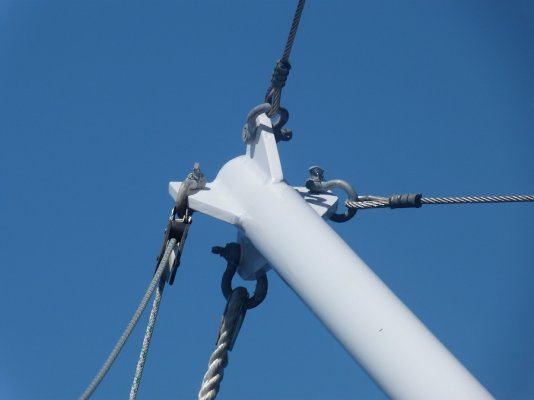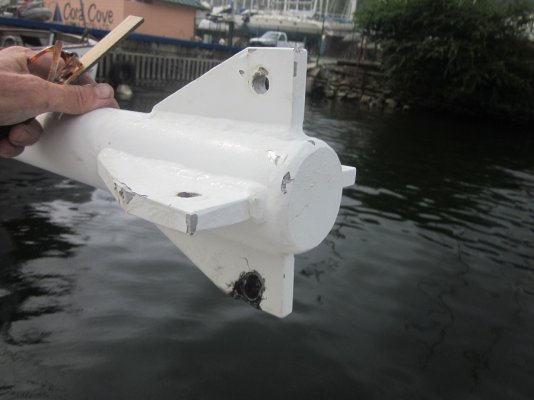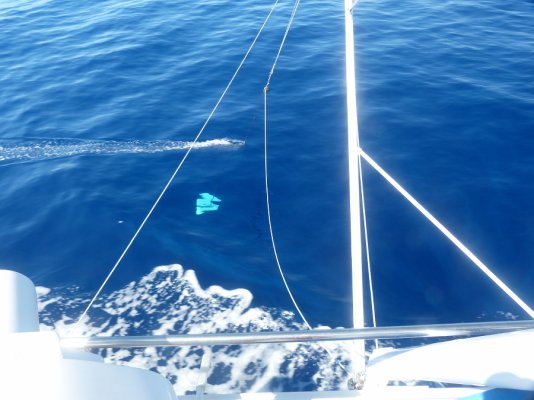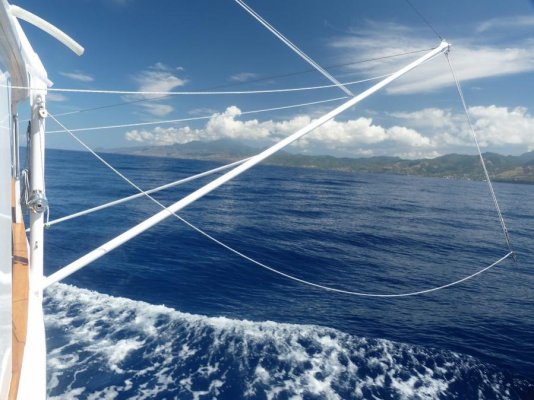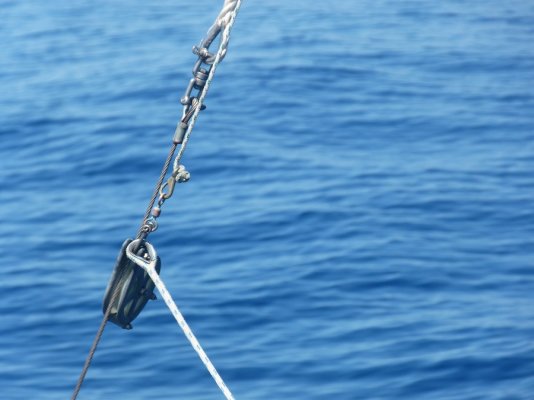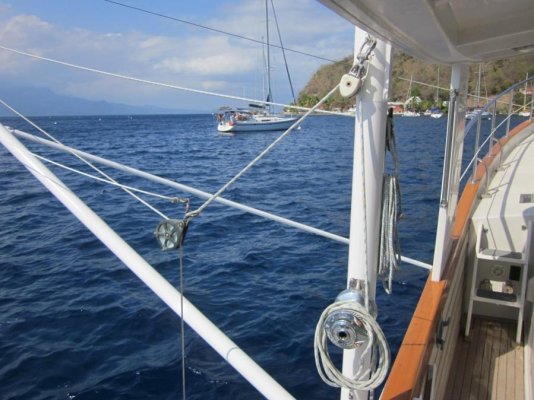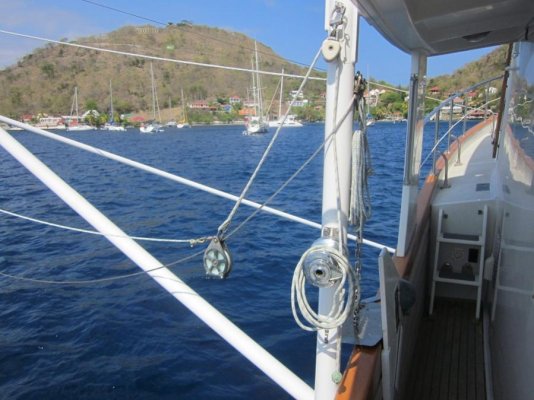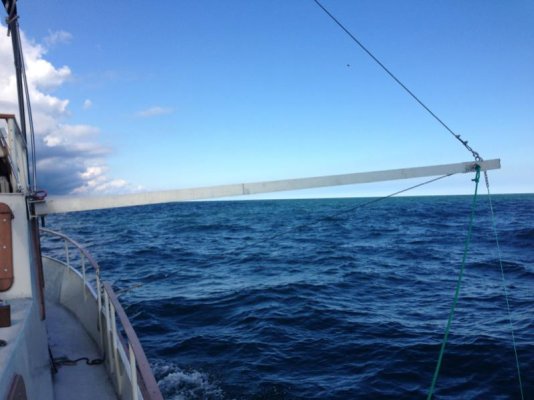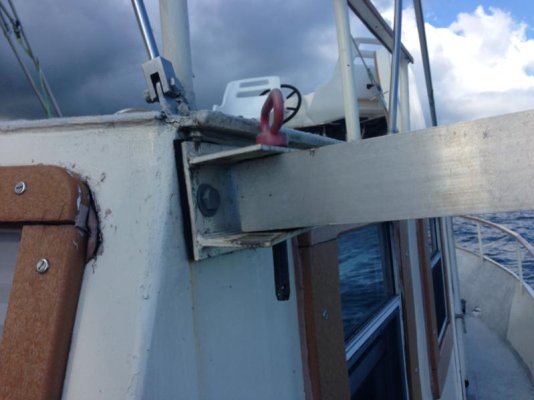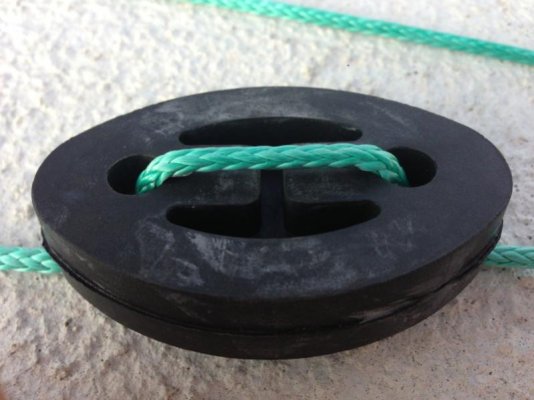here is an section from Wikipedia re Spectra/Dyneema
Dyneema and
Spectra are lightweight high-strength oriented-strand gel spun through a
spinneret. They have
yield strengths as high as 2.4
GPa (350,000
psi) and
specific gravity as low as 0.97 (for Dyneema SK75).
[9] High-strength steels have comparable yield strengths, and low-carbon steels have yield strengths much lower (around 0.5 GPa). Since steel has a specific gravity of roughly 7.8, this gives strength-to-weight ratios for these materials in a range from 8 to 15 times higher than steel. Strength-to-weight ratios for Dyneema are about 40% higher than for
aramid.
UHMWPE fibers are used in
armor, in particular,
personal armor and on occasion as
vehicle armor, cut-resistant gloves,
bow strings,
climbing equipment,
fishing line, spear lines for
spearguns, high-performance
sails, suspension lines on sport
parachutes and
paragliders, rigging in
yachting, kites, and kites lines for kites sports. Spectra is also used as a high-end
wakeboard line.
For personal armor, the fibers are, in general, aligned and bonded into sheets, which are then layered at various angles to give the resulting
composite material strength in all directions.
[10][11] Recently developed additions to the US Military's
Interceptor body armor, designed to offer arm and leg protection, are said to utilize a form of Spectra or Dyneema fabric.
[12] Dyneema provides
puncture resistance to protective clothing in the sport of
fencing.
Spun UHMWPE fibers excel as fishing line, as they have less stretch, are more
abrasion-resistant, and are thinner than traditional
monofilament line.
In
climbing, cord and
webbing made of combinations of UHMWPE and nylon
yarn have gained popularity for their low weight and bulk, though, unlike their nylon counterparts, they exhibit very low elasticity, making them unsuitable for limiting forces in a fall. Also, low elasticity translates to low
toughness. The fiber's very high lubricity leads to poor knot-holding ability, and has led to the recommendation to use the
triple fisherman's knot rather than the traditional
double fisherman's knot in 6mm UHMWPE
core cord to avoid a particular failure mechanism of the double fisherman's, where first the sheath fails at the knot, then the core slips through.
[13][14]
Owing to its low density, ships'
hawsers and
cables can be made from the fibre, and float on sea water. "Spectra Wires" as they are called in the towboat community are commonly used for face wires as a lighter alternative to steel wires.
It is used in skis and snowboards, often in combination with
carbon fiber, reinforcing the
fiberglass composite material, adding stiffness and improving its flex characteristics. The UHMWPE is often used as the base layer, which contacts the snow, and includes abrasives to absorb and retain wax.
It is also used in lifting applications for manufacturing low weight, and heavy duty lifting slings . Due to its extreme abrasion resistance it is also used as an excellent corner protection for synthetic lifting slings.
High-performance lines (such as
backstays) for
sailing and
parasailing are made of UHMWPE, due to their low stretch, high strength, and low weight.
[15]
Dyneema was used for the 30-kilometre space tether in the ESA/Russian
Young Engineers' Satellite 2 of September, 2007.
On the tugs I work on we use Spectra tow lines, harbour tugs 60/80 tonne bolllard pull.
Not the anchor handlers etc I previously worked on. Although we did use Spectra lines on some of these used in static towing of FPSOs.
Not easy to splice but can be done but easier to get a pro shop to do what is required.
Cheers
Benn

